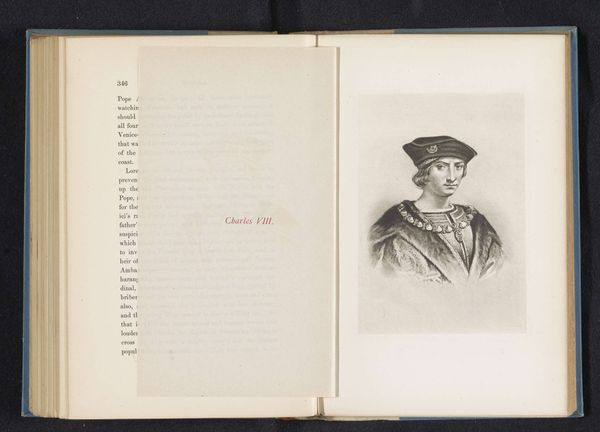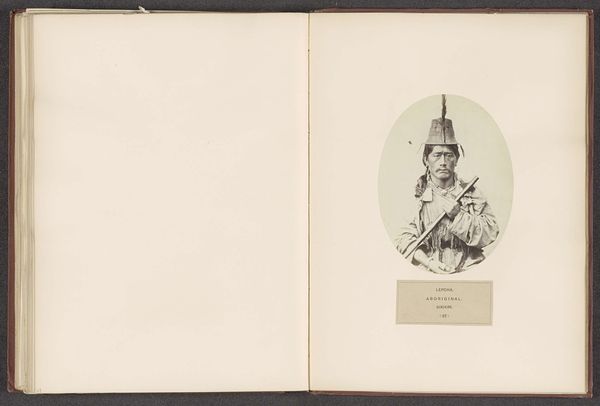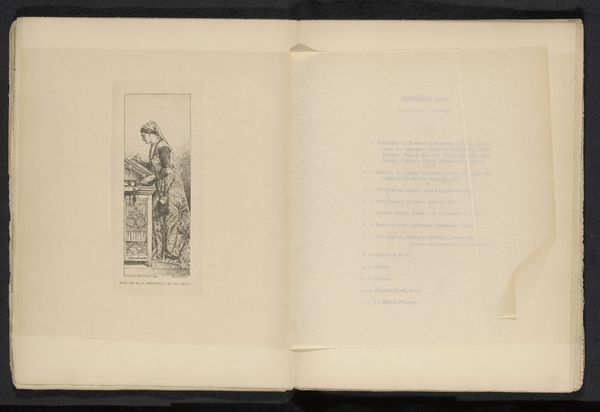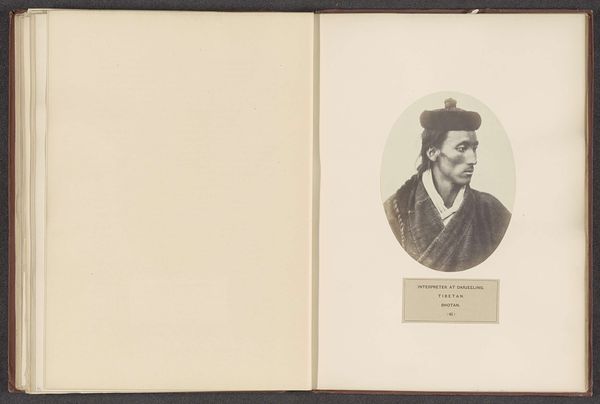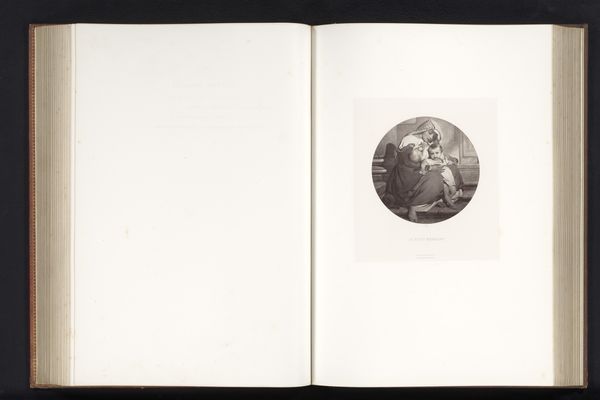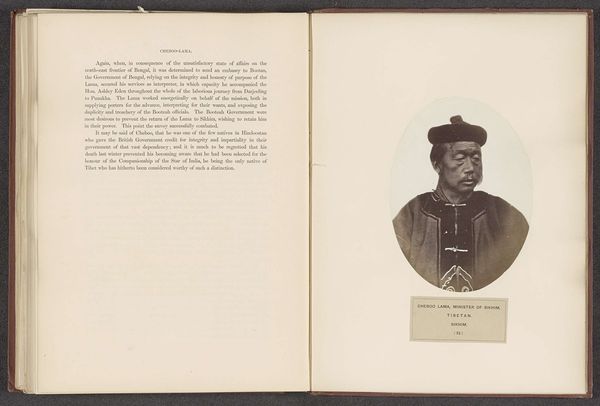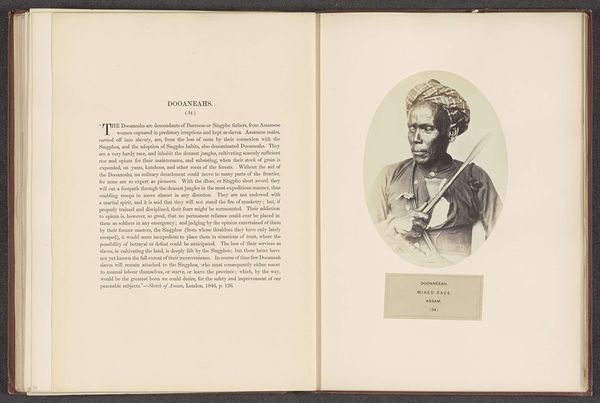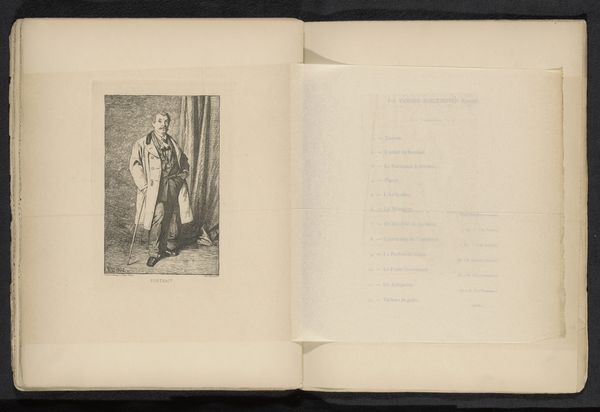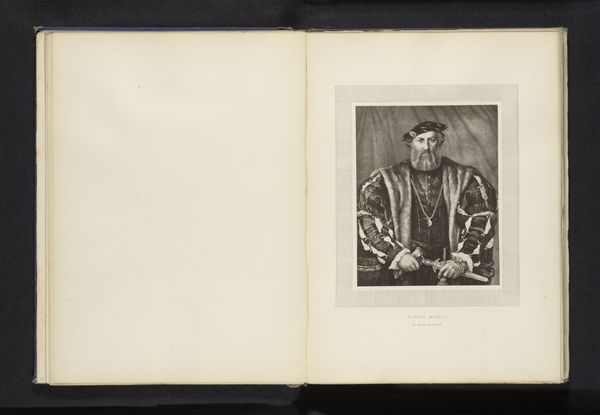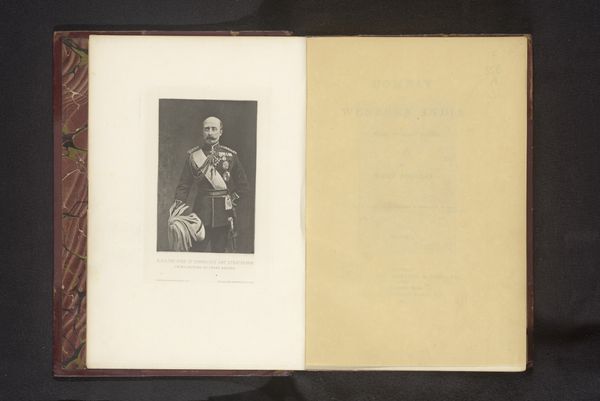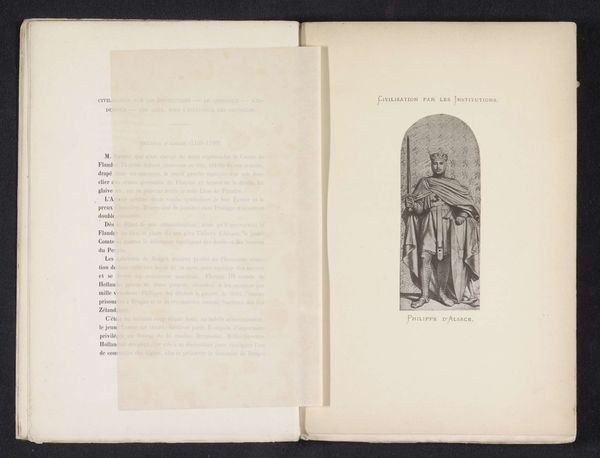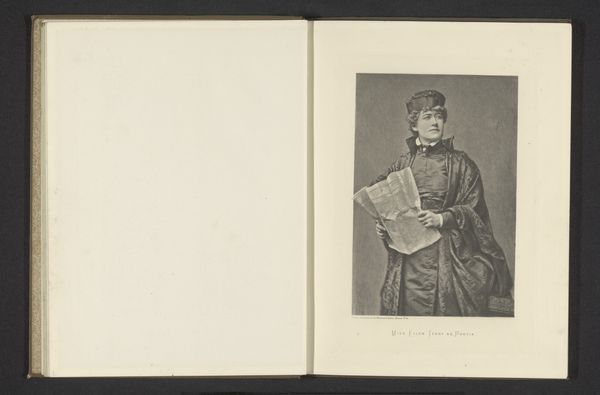
photography
#
portrait
#
asian-art
#
photography
#
realism
Dimensions: height 175 mm, width 130 mm
Copyright: Rijks Museum: Open Domain
Curator: Here we have a photograph titled "Portret van een onbekende Bhutia man uit Tibet," or "Portrait of an Unknown Bhutia Man from Tibet," created by Benjamin Simpson before 1868. It's quite an early example of photographic portraiture from that region. Editor: Wow, the gaze in this portrait… there’s such stillness in the eyes, yet also a sense of the vast landscapes reflected there. It's like looking at a mountain range. Curator: Indeed. Simpson’s work, and that of other photographers documenting colonial India, was deeply influenced by the European fascination with exoticising the 'Orient' – these images circulated widely, contributing to particular perceptions about the region's inhabitants. Editor: So, while ostensibly 'realistic', photography served specific socio-political narratives? You know, I am fascinated by the ornamentation--that heavy necklace and the braided hair hint at a personal narrative, struggling to surface despite the flattening effect of the Western gaze. Curator: Precisely. Photography during this era was rarely neutral; its ethnographic impulse intertwined with colonial power dynamics. These images became visual tools for categorizing and studying the populations within the expanding British Empire. The inclusion of studio props was quite limited, leading us to see the 'Bhutia Buddhist' of Tibet not as the individual, but the colonial "other". Editor: It’s striking how much of this historical context resonates even today. It’s an echo of similar challenges of representation--especially how we confront images that purport to reveal some kind of simple "truth," yet conceal complex power structures and, sometimes, beautiful, untold stories. It leaves me feeling… well, a little melancholic and reflective. Curator: Absolutely. We must approach such historical images with criticality, examining them through the multiple lenses of art history, post-colonial studies, and the ongoing discourse around photographic ethics. Editor: Thanks. It's one thing to appreciate the artistry, it’s another to feel its weight, even a century and a half later.
Comments
No comments
Be the first to comment and join the conversation on the ultimate creative platform.
